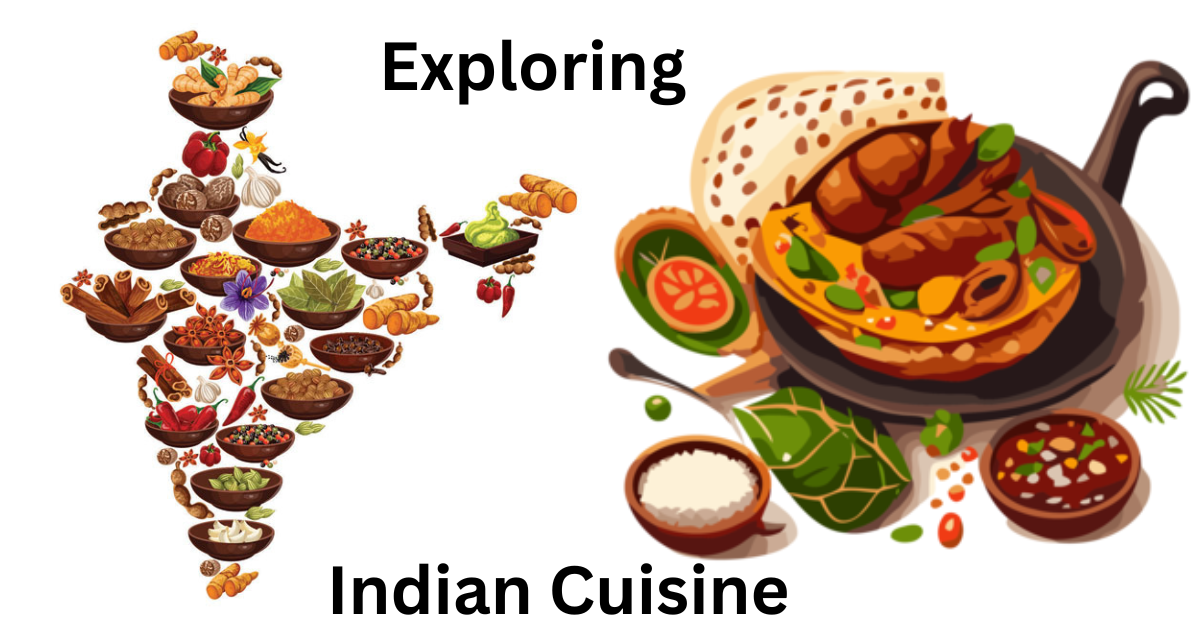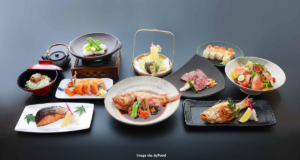
Exploring Indian Cuisine–A Journey through the Flavors of East, West, North, South
Indian cuisine is known for its diversity, rich flavors and aromatic spices. It has its root established in the rich history and cultural value which reflects the food culture and eating habits of India showcasing the Culinary Heritage and diversity in its nature. Being it curries Full Of Spices from north India to dishes infused with coconut from South India there are very unique and diverse range of food items you can Discover in the journey of exploring Indian cuisine. North Indian Cuisine Known for the generous use of spices with robust flavors dishes like butter chicken, biryani and various types of breads and naan are the staples of North Indian cuisine. And not only this the cuisine also involves rich gravis and delicious meat dishes influenced by cooking tradition of the Mughals. Renowned for its diverse flavors and vibrant spices detectable in various dishes, North Indian cuisine has captivated food enthusiasts worldwide. The flavors and the range of varieties found in North Indian cuisine is highly influenced by the culture of Central Asia, Mughals and Persian that offers test like no other. Let’s delve into the essence of this gastronomic treasure trove and discover the key elements that make it so beloved. Diversity of Ingredients All the dishes from North Indian cuisine are an explosion of a wide range of ingredients. It has aromatic spices like coriander. Cumin, Cardamom or fresh vegetables like potatoes, tomatoes and so on play a really important role in making unique flavors that identify the characterized North Indian dishes. Spice Blends and Seasonings Do you know what is the heart and soul of North Indian cuisine? It’s the spices that make every dish so flavorful. Every spice adds a distinct level of Aroma and flavor to the dishes spices like Garam Masala, cloves, cardamom, cinnamon and many more add a unique flair to the culinary tapestry. Iconic Dishes From the creamy indulgence of butter chicken to the dal makhani being the comfort food of all time. Every dish has its own unique story, tradition and culinary mastery hidden in it. Tandoori chicken, marinated in yogurt and spices, and cooked in a clay oven (tandoor), exemplifies the smoky, charred flavors that North Indian cuisine is renowned for. Bread Varieties None of the Indian meals is completed without a complimentary bread which is basically a fluffy naan or paratha. These bread varieties serve as the perfect accompaniment to curries, dals, and kebabs, offering a delightful interplay of textures and flavors. Sweet Endings North Indian cuisine is also celebrated for its indulgent desserts. Gulab jamun, deep-fried dough balls soaked in sugar syrup, and kheer, a creamy rice pudding flavored with cardamom and saffron, are just few of many delicacies of North Indian desert which is enjoyed after every meal get that feeling of accomplishment and satisfaction. South Indian Cuisine On the other hand South Indian cuisine is lighter, healthier and revolves around rice, lentils and coconut mainly. Dishes like Idli, Dosa, Sambar, Vada are some of the prominent dishes of the region with a unique blend of flavors and textures. While South Indian dishes are known for its vibrant colors and a rich cultural heritage. Arranging from spicy curries of Andhra Pradesh to the dishes infused with coconut from Kerala every region has its own unique culinary tradition that is their mark of identification worldwide. Let’s get some insights of South Indian cuisine and unravel the secrets of its popularity and taste. Diversity of Flavors Incredible diversity of flavor is one of the most prominent Hallmarks of South Indian cuisine. The use of aromatic spices such as mustard seeds, curry leaves, fenugreek, and tamarind lends a distinctive taste to dishes. Being it fiery vindaloo of Goa or Dangi Rasam from Tamilnadu South Indian cuisine offer a very pleasing palette of experiences as per different taste preferences. Staple Ingredients Rice and lentils form the backbone of South Indian cuisine, serving as the foundation for a wide array of dishes. Idli, Dosa and Vada are some of the popular breakfast dishes that are made from fermented rice and lentils batter which is not just rich in taste but is really beneficial for our health. Coconut is that ingredient of South Indian cooking that is very crucial as it has a creamy texture and a subtitle taste of sweetness to many dishes being it coconut chutney to fish curry coconut is used everywhere to enhance the taste. Regional Variations In Kerala, known as the “Land of Spices,” coconut, seafood, and spices like black pepper and cardamom dominate the cuisine. Factors like geographical area, climate and cultural influences are some of the key factors that has shaped The Identity of culinary skills of South Indian cuisine. In contrast Andhra Pradesh is known for its spicy and tangy flavors and Hyderabadi biryani is popular for its own culinary prowess. Vegetarian Delights You can enjoy the taste of sambar with lentils full of vegetables enjoyed with crispy masala dosa filled with spicy potato filling. Do you know that South Indian cuisine is referred to as the paradise for vegetarians as it has a diverse range of dishes full of flavors and plant based nutritious items. South Indian cuisine will never let your expectations down and their vegetarian delights will tantalize your taste buds every time being aromatic flavors of vegetable korma or slight sweet coconut chutney, there is no shortage of vegetarian dishes. East Indian Cuisine East Indian cuisine is distinct in its use of mustard oil, panch phoron (five spice blend), and seafood. Food of this region has a great influence from coastal areas that is the reason dishes like fish curries, steamed food items and sweets made from jaggery are commonly found here. East Indian cuisine is mainly known for its aromatic spices, vibrant flavors and diverse ingredients. You can easily find a perfect blend of various traditions and influences from the colonial culture in East Indian dishes ranging from West Bengal, Assam, Jharkhand, Bihar to Orissa; their local ingredients can be




